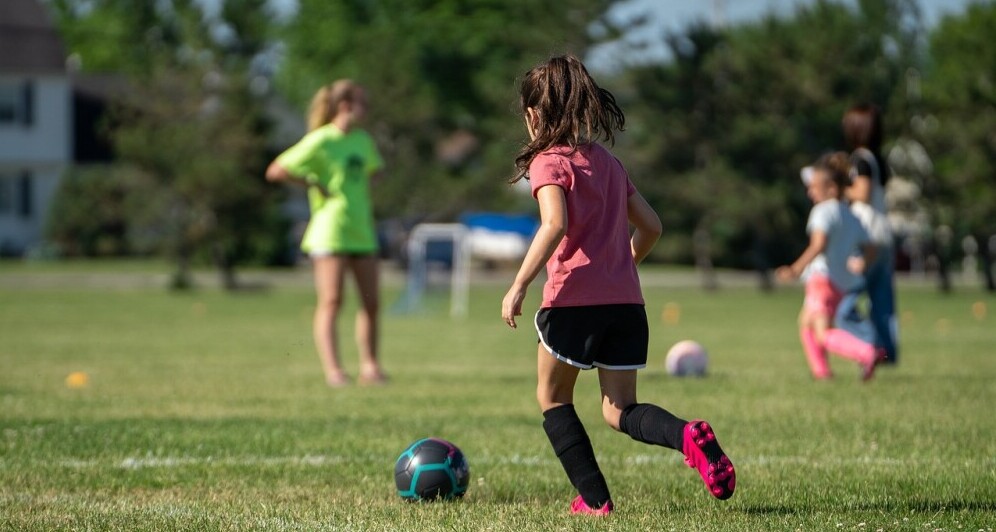
Unique strategies in youth soccer can be a game-changer. While traditional methods have their merit, sprinkling in some creativity can amplify a young player’s potential and enjoyment of the game. Emphasizing fun and engagement fosters a positive environment where skills development isn’t a chore but an exciting challenge.
The beauty of youth soccer is its flexibility. Kids learn faster when they’re enjoying themselves. Introducing unique strategies spark curiosity and keep them on their toes. Think outside the box – games within drills, varied techniques for the same skill, and playful competitions.
Different coaching styles play a significant role. It’s not just teaching drills; it’s about encouraging creativity and critical thinking. Whether it’s small-sided games focusing on ball control or inventive exercises to develop spatial awareness – a great coach adapts, making learning dynamic and fun.
Creativity in soccer goes beyond ball skills. It includes how players think about the game. Encourage kids to devise their own game plans and test them. Let them take the lead in certain drills, boosting their confidence and decision-making skills. This involved approach helps them understand the game on a deeper level, connecting tactics with actual play.
The experience a child has now impacts their love for the game. When kids see their ideas on the pitch and those ideas succeed, they feel valued and excited. This fosters a lifelong appreciation and passion for soccer.
Building a Strong Foundation: Fundamental Techniques with a Twist
Mastering the basics is, well, basic. But who said basics had to be boring? Injecting a twist can keep young players engaged and eager to improve. Fundamental techniques are essential, yet the method of teaching can transform the learning experience.
Start with essential skills every young player needs: dribbling, passing, shooting, and defending. Instead of standard drills, incorporate fun and creative ways to practice these skills. For example, use obstacle courses for dribbling practice, turning training into a fun race. Setting up cones in unconventional patterns can challenge coordination and control.
Incorporate unconventional movements. Introducing techniques like the ‘Rabona’ or ‘Cruyff turn’ early can be fun and elevate skill levels. These aren’t just flashy moves but teach balance, agility, and confidence. Mixing in some freestyle elements can make training sessions exciting.
Using games and activities that reinforce foundational techniques keeps practices lively. Try small-sided games where players score points for successful passes or interceptions. These activities create a competitive environment that still focuses on skill development.
The key is variety. Rotate different drills and activities to prevent monotony. Engage kids with new challenges regularly, showing them that soccer is dynamic and ever-evolving. This approach helps retain their interest, making them more likely to practice regularly and improve steadily.
Tactical Prowess: Unique Game Plans for Different Match Situations
Every game is a new puzzle. Having a variety of game plans ready helps young players adapt and thrive. Teaching flexibility in tactics ensures they’re prepared for any situation on the field.
For offensive strategies, consider dynamic positioning drills. Kids can learn to read the game better, reacting to how opponents play. Encourage them to try out different attacking formations. Switch things up with drills focusing on quick transitions and counter-attacks. These exercises sharpen reaction time and decision-making.
When it comes to defense, practice adaptability. Use drills that shift focus rapidly – from zonal marking to man-to-man. This approach prepares kids for different play styles they’ll encounter. Small-sided games focusing on defensive strategies can simulate real match pressure, helping kids learn to stay calm and make smart choices.
Real-life examples make tactics come alive. Analyze professional games, showing how certain moves and strategies work. Break down these moments and replicate them in training sessions. This hands-on learning cements understanding and inspires young players with real-world applications.
The biggest takeaway is teaching adaptability. Encourage kids to think on their feet. Flexibility during games is crucial. Mix up training sessions with surprise scenarios they might face in real matches. Developing these skills prepares them to face any opponent confidently, turning unexpected moments into opportunities.
Fostering Team Cohesion and Leadership Among Young Players
Teamwork makes soccer what it is. Building a cohesive unit where each player feels valued creates a strong team spirit. Effective communication is the glue that holds everything together. Play exercises that focus on verbal and non-verbal communication skills. For example, games where players are blindfolded and need to rely on partners guiding them by voice engage their senses and emphasize trust.
Team spirit grows from shared experiences. Plan activities outside of regular training sessions like team-building exercises or social events. When kids connect off the field, it strengthens their bond on the pitch. A united team demonstrates better coordination and helps every player to step up their game.
Leadership skills are vital. Encourage kids to take on leadership roles in various drills and games. Rotate the captain’s band frequently, giving everyone a chance to lead and feel responsible for the team’s success. Highlight the importance of on-field communication from leaders who guide and motivate their peers.
Consider adding exercises focused on leadership development. Simulate match scenarios where kids need to make quick decisions under pressure. Discuss these moments afterward, reinforcing the importance of good leadership and decision-making. Leadership isn’t just about speaking up; it’s about setting an example through actions and behavior.
Exercises that boost camaraderie work wonders. Relay races, team challenges, and cooperative games help build a sense of belonging. When everyone feels they’re part of the team, morale improves, and so does performance.
